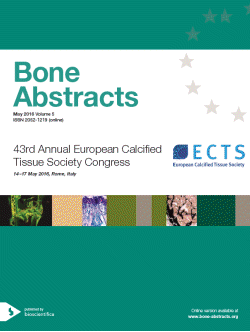Searchable abstracts of presentations at key conferences on calcified tissues

43rd Annual European Calcified Tissue Society Congress
Rome,
Italy
14 May 2016 - 17 May 2016




